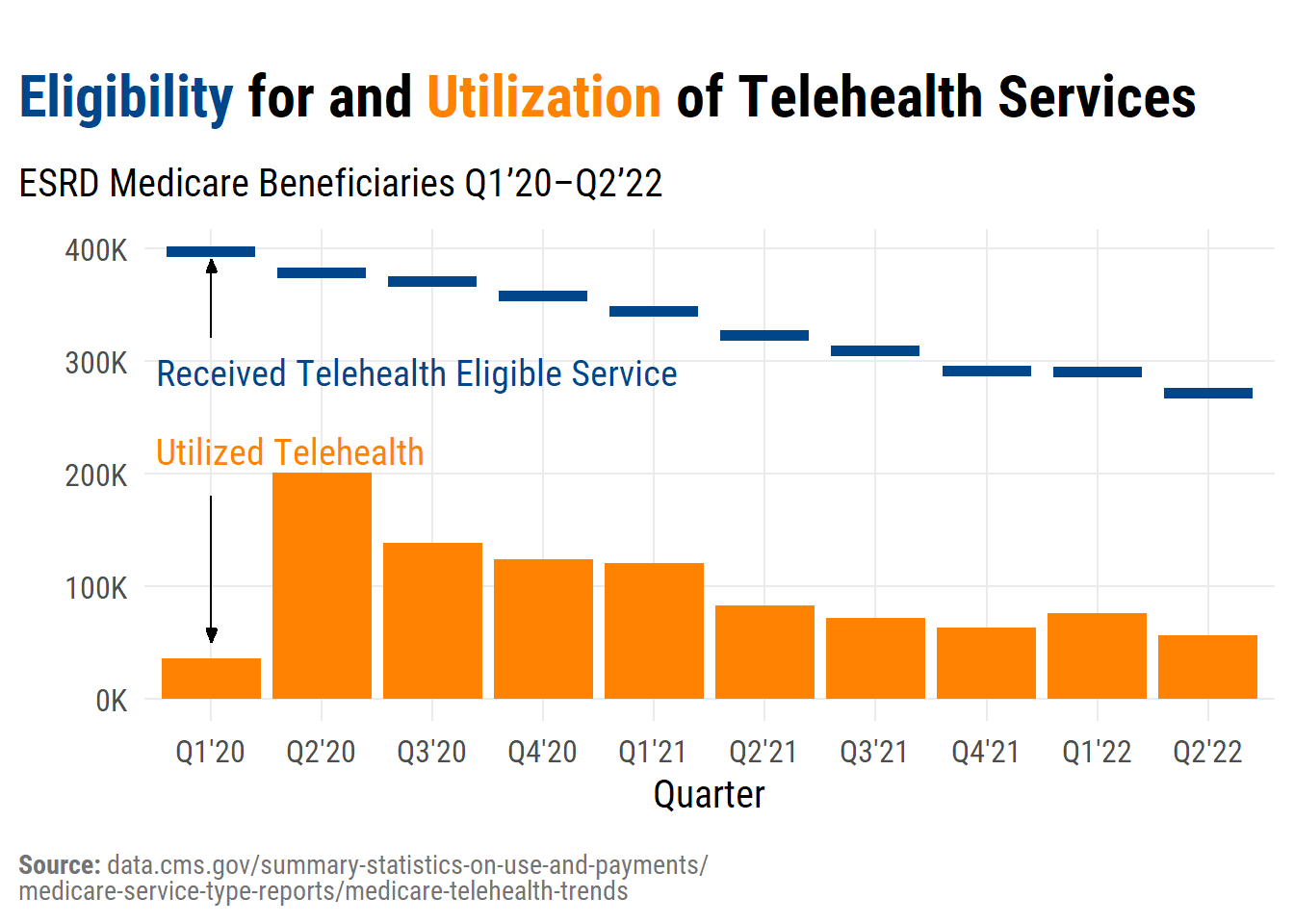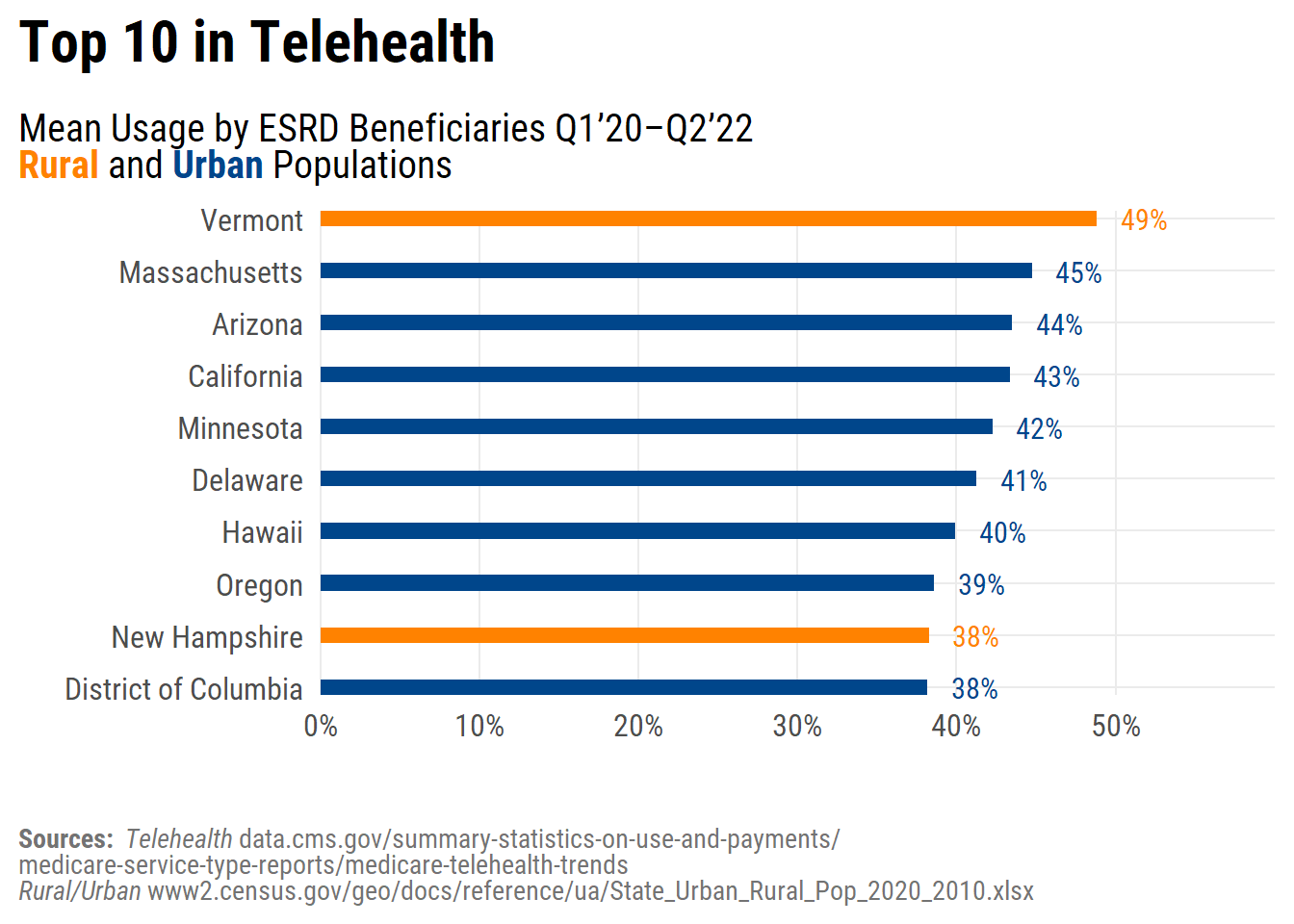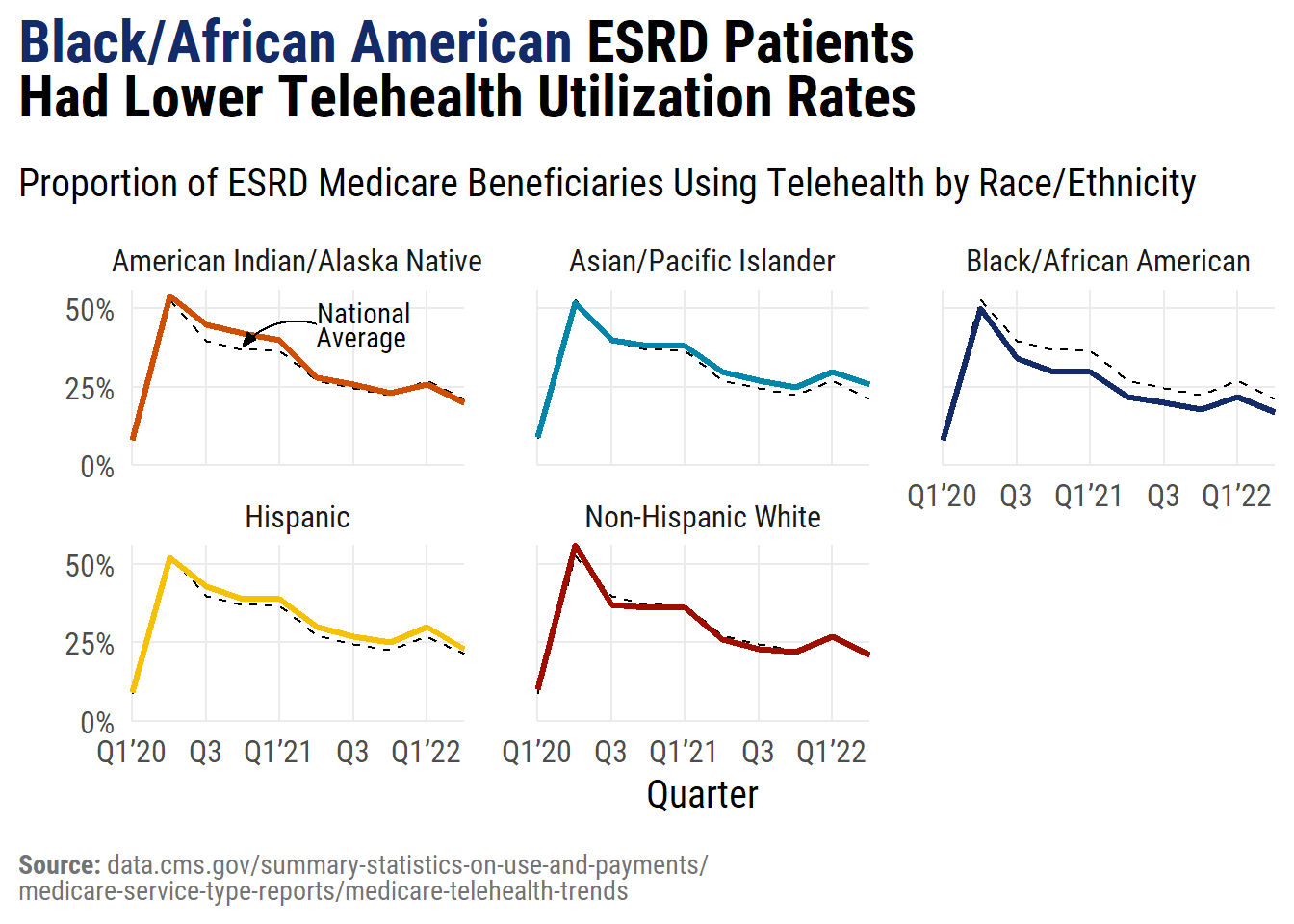
Data Detail: Telehealth Trends in ESRD
Telehealth Use by ESRD Medicare Beneficiaries Has Declined Since Initial COVID-19 Surge
Centers for Medicare & Medicaid Services (CMS) data show declining telehealth use among beneficiaries with end-stage renal disease (ESRD). The start of the COVID-19 pandemic led to a five-fold increase in ESRD patients receiving telemedicine in the second quarter (Q2) of 2020, when CMS issued a 1135 waiver reimbursing telehealth visits at the same rates as in-person. Since then the proportion of ESRD patients receiving telehealth-eligible services via telehealth has ebbed, dropping to 21% in Q2 2022.
In the data released by CMS, a telehealth visit was defined as a routine office visit via synchronous real-time audio (audio-only) or audio–video; eligible users as a unique beneficiary who received a telehealth-eligible service; and telehealth user as a unique beneficiary who received ≥1 telehealth service. As of January 1, 2023, 20 ESRD care CPT codes are eligible for telehealth, including home dialysis (Table 1). Yet even at its peak in Q2 2020, the total number of ESRD beneficiaries receiving telehealth services (200,709) represented only 25% of the prevalent ESRD population during that quarter (792,639) (USRDS 2022).
Table 1: Medicare Telehealth-Eligible Services for ESRD
| Effective January 1, 2023 | |
| CPT Code | Short Descriptor |
|---|---|
| 90951 | ESRD Service 4 Visits/Month: Patient <2 Years |
| 90952 | ESRD Service 2–3 Visits/Month: Patient <2 Years |
| 90953 | ESRD Service 1 Visit/Month: Patient <2 Years |
| 90954 | ESRD Service 4 Visits/Month: Patient 2–11 Years |
| 90955 | ESRD Service 2–3 Visits/Month: Patient 2–11 Years |
| 90956 | ESRD Service 1 Visit/Month: Patient 2–11 Years |
| 90957 | ESRD Service 4 Visits/Month: Patient 12–19 Years |
| 90958 | ESRD Service 2–3 Visits/Month: Patient 12–19 Years |
| 90959 | ESRD Service 1 Visit/Month: Patient 12–19 Years |
| 90960 | ESRD Service 4 Visits/Month: Patient ≥20 Years |
| 90961 | ESRD Service 2–3 Visits/Month: Patient ≥20 Years |
| 90962 | ESRD Service 1 Visit/Month: Patient ≥20 Years |
| 90963 | ESRD Home Patient Service/Month: Patient <2 Years |
| 90964 | ESRD Home Patient Service/Month: Patient 2–11 Years |
| 90965 | ESRD Home Patient Service/Month: Patient 12–19 Years |
| 90966 | ESRD Home Patient Service/Month: Patient ≥20 Years |
| 90967 | ESRD Service/Day Patient: <2 Years |
| 90968 | ESRD Service/Day Patient: 2–11 Years |
| 90969 | ESRD Service/Day Patient: 12–19 Years |
| 90970 | ESRD Service/Day Patient: ≥20 Years |
| Source: https://www.cms.gov/medicare/medicare-general-information/telehealth/telehealth-codes | |
Strong Telehealth Uptake Among Urban Populations
Telehealth use spiked across U.S. states in Q2 2020 (range 34%–76%) with top rates seen in states that were already using telehealth to provide care to ESRD beneficiaries. In Q1 2020 prior to the public health emergency, Vermont and Massachusetts were among the states with the highest proportion of ESRD patients using telemedicine, and they remained in the top 10 for average telehealth usage from 2020 through Q2 2022. Of note, just two of these top 10—Vermont and New Hampshire—were also in the top fifth of states by rural population, demonstrating telemedicine’s potential draw in urban areas.

Blacks/African Americans Had Lower Telehealth Usage Rates
When telehealth usage by ESRD beneficiaries were aggregated by race and ethnicity, most groups had telehealth usage similar to the national average. However Black/African American patients—who comprise 13.6% of the U.S. population (Bureau 2022a) yet 29% of Americans burdened by ESRD (USRDS 2022)—trailed the national average of telehealth use at each time point, at times by as much as 7.1%, even as CMS data treated audio-only telehealth equivalent to traditional telehealth.

References
Citation
@online{a._pivert2023,
author = {A. Pivert, Kurtis},
title = {Data {Detail:} {Telehealth} {Trends} in {ESRD}},
date = {2023-02-01},
url = {https://data.asn-online.org/posts/data_detail_telehealth/},
doi = {10.70093/k49910228},
langid = {en}
}
